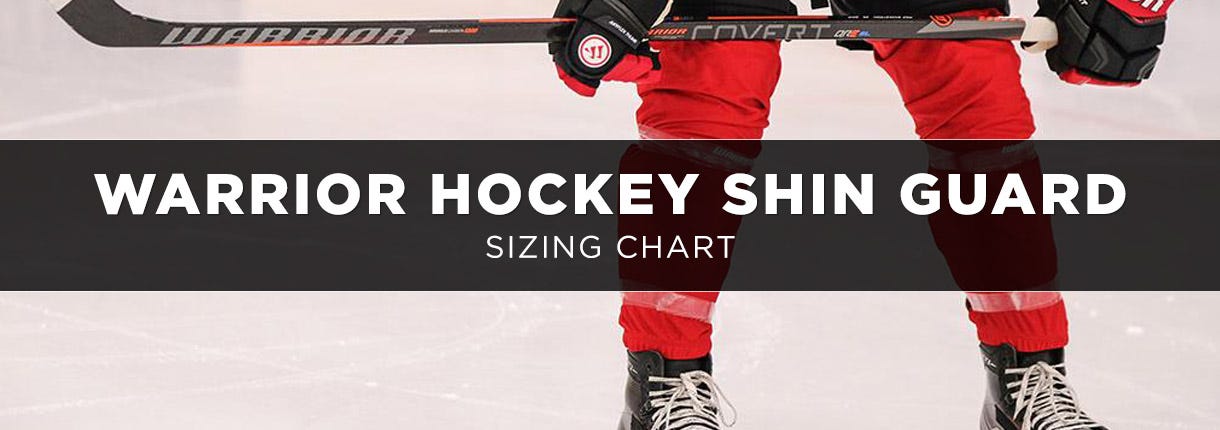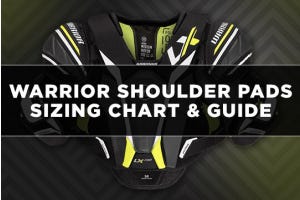Warrior Shin Guard Sizing Chart & Guide

Finding the right shin guard size is crucial for any hockey player, as ill-fitting shin guards can compromise safety, comfort, and overall performance on the ice. This guide delves into Warrior shin guard sizing, providing detailed instructions to help you select the perfect fit for optimal protection and mobility. With well-fitted shin guards, you can ensure maximum safety, comfort, and efficiency on the ice.
The Significance of Proper Shin Guard Fit
Properly fitted shin guards are essential for several reasons. They protect the lower legs from injuries caused by pucks, sticks, and collisions, which are common in hockey. A good fit also ensures comfort, allowing players to skate without irritation or restriction. Moreover, well-fitted shin guards enhance performance by staying securely in place, providing consistent protection throughout the game. Given the high-impact nature of hockey, selecting the correct shin guard size is crucial for both safety and gameplay.
Understanding the Warrior Shin Guard Sizing Chart
Senior Sizing
| Size | Shin Size | Knee to Ankle |
|---|---|---|
| Small | 13" | 12" - 13" |
| Medium | 14" | 13" - 14" |
| Large | 15" | 14" - 15" |
| X-Large | 16" | 15" - 16" |
| XX-Large | 17" | 16" - 17" |
Junior Sizing
| Size | Shin Size | Knee to Ankle |
|---|---|---|
| Small | 10" | 9" - 11" |
| Medium | 11" | 10" - 11" |
| Large | 12" | 10" - 12" |
| X-Large | 13" | 11" - 13" |
Youth Sizing
| Size | Shin Size | Knee to Ankle |
|---|---|---|
| Small | 7" | 6" - 7" |
| Medium | 8" | 7" - 8" |
| Large | 9" | 8" - 9" |
How to Measure for Warrior Shin Guards
To accurately measure for Warrior shin guards, follow these steps:
- Sit Down: Sit on a chair with your legs bent at a 90-degree angle.
- Measure from Knee to Ankle: Use a measuring tape to measure the distance from the center of your kneecap to the top of your skate (where the tongue starts).
- Consult the Sizing Chart: Compare your measurement to the Warrior shin guard sizing chart to find the appropriate size based on your height and leg length.
- Check for Comfort: Ensure that the shin guard covers your knee cap and extends down to the top of your skate without restricting movement.
Additional Factors to Consider for Shin Guard Fit
- Player Position: Forwards may prefer lighter, more flexible shin guards, while defensemen might opt for more robust protection.
- Play Style: Aggressive players who engage in frequent shot-blocking or physical play should consider more protective shin guards.
- Level of Protection: Higher levels of play typically require more advanced protection features.
- Personal Preference: Some players may prefer a looser fit for mobility, while others may want a snug fit for maximum security.
Common Sizing Mistakes and How to Avoid Them
- Incorrect Measurements: Ensure accurate measurements from the knee to the top of the skate. Double-check measurements to prevent errors.
- Ignoring Height Recommendations: Only considering leg length without taking height into account can lead to poor fit.
- Overlooking Play Style: Not factoring in how aggressive or passive your play style is can result in inadequate protection.
- Skipping Try-Ons: Always try on shin guards before purchasing to ensure they fit properly and feel comfortable.
FAQs on Warrior Shin Guard Sizing Chart & Guide
How should Warrior shin guards fit when wearing hockey socks and pants?
Shin guards should fit snugly without gaps, covering the knee cap and extending to the top of the skate, with hockey socks and pants fitting comfortably over them.
What’s the best way to secure shin guards for the safest fit?
Use Velcro straps to secure the shin guards, ensuring they are tight enough to stay in place but not so tight that they restrict movement. Hockey tape can be used for additional security.
Can I use the same Warrior shin guard size for ice and roller hockey?
Yes, the same size can generally be used for both ice and roller hockey, but make sure to verify fit and comfort as the playing surfaces differ.
What is the lifespan of a Warrior shin guard, and how do I know when it’s time to replace it?
The lifespan varies based on frequency of use and level of play, but signs of wear such as cracks, loss of padding, or diminished protection indicate it’s time to replace them, typically every 1-2 years.
How do Warrior shin guard sizes compare to those of other brands?
Warrior shin guard sizes are generally consistent with industry standards, but slight variations may exist. It’s best to compare specific sizing charts across brands.
What adjustments can I make if my shin guards don’t fit perfectly?
If shin guards don’t fit perfectly, try using additional padding, adjusting the straps, or securing them with hockey tape to improve fit and comfort.









Login and Registration Form
or
Create an account